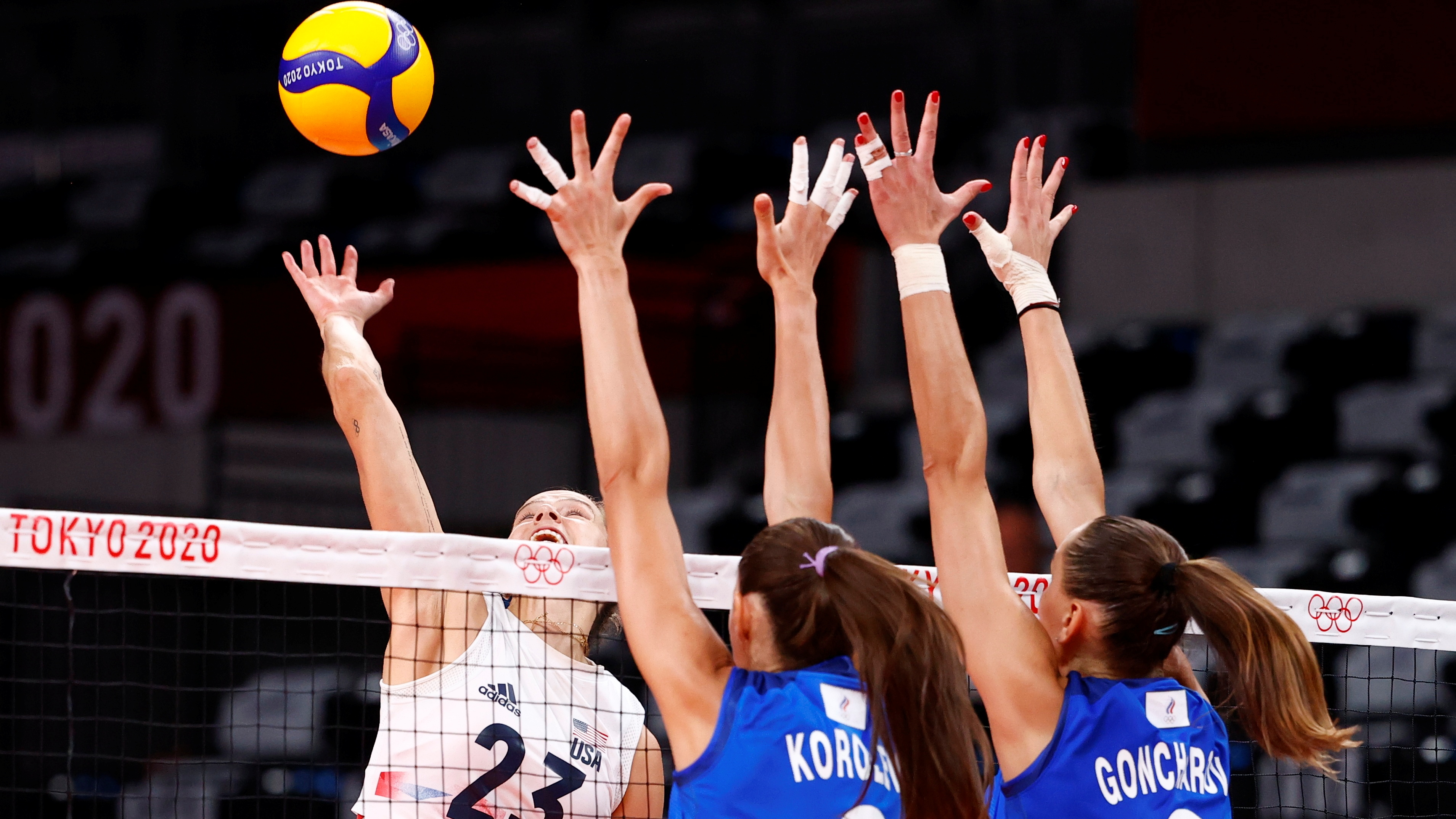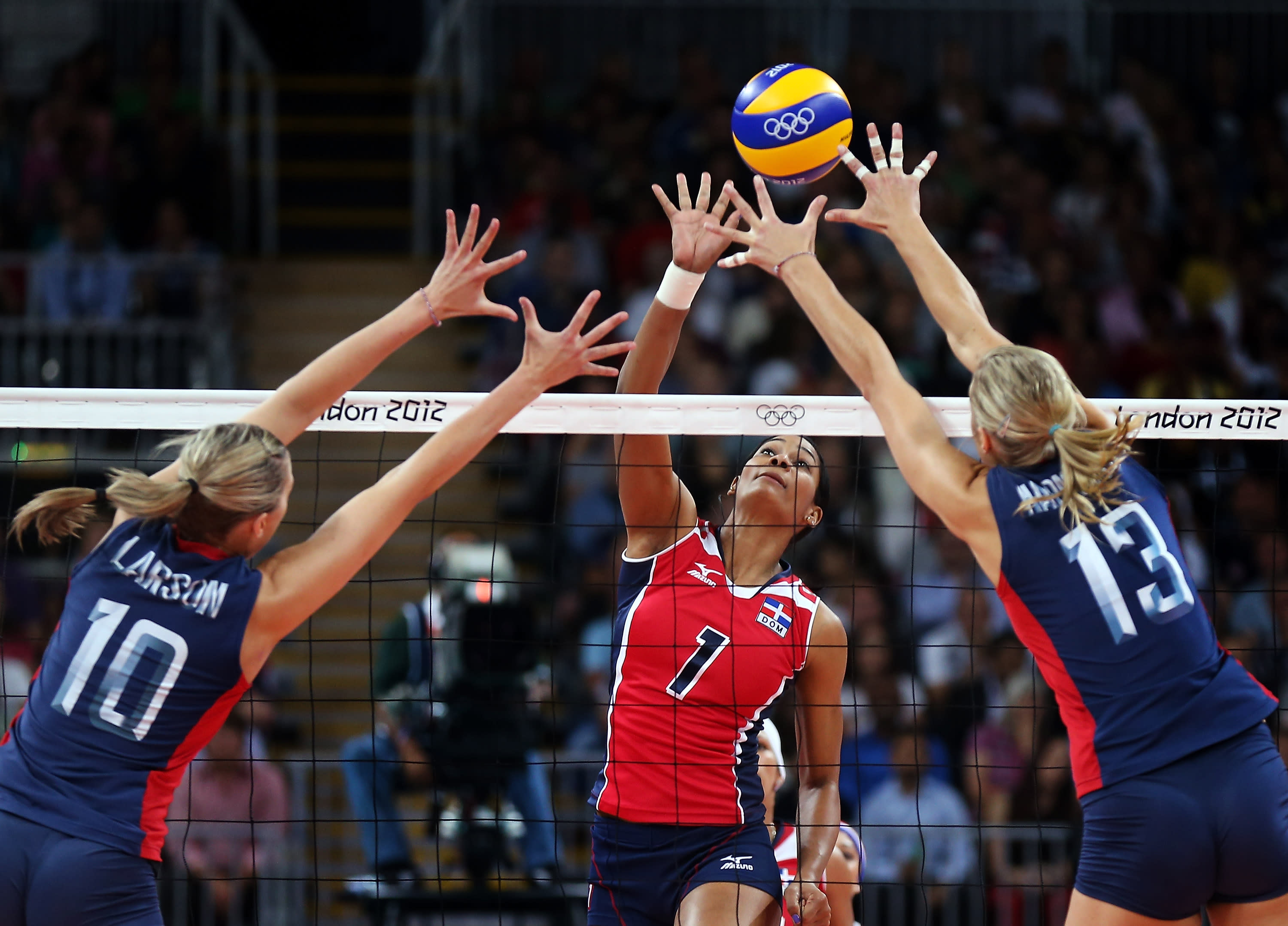History of Olympic Volleyball: Olympics Volleyball

Volleyball’s journey to becoming an Olympic sport is a captivating tale of innovation, global appeal, and athletic excellence. From its humble beginnings as a recreational activity to its status as a fiercely contested international spectacle, volleyball has undergone a remarkable transformation.
Origins and Evolution of Volleyball
Volleyball was invented in 1895 by William G. Morgan, a physical director at the YMCA in Holyoke, Massachusetts. Morgan aimed to create a less physically demanding sport than basketball, which was gaining popularity at the time. The game was initially called “mintonette” and involved two teams of nine players, with a net separating them. Players used their hands to volley a ball over the net, with the goal being to prevent the ball from touching the ground on their side.
The rules of volleyball evolved rapidly in the early years, with the number of players being reduced to six per team and the use of a lighter ball becoming standard. The sport spread quickly beyond the United States, gaining popularity in Europe and Asia. The International Volleyball Federation (FIVB) was founded in 1947, and volleyball was officially recognized as an Olympic sport in 1964.
Significant Moments and Milestones in Olympic Volleyball History
The first Olympic volleyball tournament was held at the 1964 Tokyo Summer Olympics, with only men’s teams competing. The Soviet Union won the gold medal, defeating Czechoslovakia in the final. Women’s volleyball was introduced to the Olympic program at the 1964 Tokyo Summer Olympics, with the Soviet Union again emerging victorious. The 1984 Los Angeles Summer Olympics saw the introduction of beach volleyball, a two-on-two variation of the sport played on sand.
Throughout the history of Olympic volleyball, numerous memorable moments have captivated audiences worldwide. The 1980 Moscow Summer Olympics witnessed a thrilling men’s volleyball final between the Soviet Union and Bulgaria, with the Soviets prevailing in five sets. The 1992 Barcelona Summer Olympics marked the first time that professional athletes were allowed to compete in the Olympics, leading to a surge in the quality of play. The 2000 Sydney Summer Olympics saw the United States women’s volleyball team win its first Olympic gold medal, defeating Cuba in the final.
Evolution of Rules and Playing Styles in Olympic Volleyball
The rules of Olympic volleyball have evolved significantly over the years, with changes aimed at promoting a more dynamic and exciting game. In the early years of the sport, the rules were relatively simple, with players allowed to hit the ball with any part of their body. However, as the sport became more competitive, rules were introduced to restrict the use of the hand and to emphasize the importance of teamwork and strategic play.
The introduction of the libero position in 1998 revolutionized the game, allowing teams to specialize a player in defensive duties. The libero is allowed to wear a different colored jersey than their teammates and is not allowed to serve or block, but they are permitted to pass and dig the ball with greater freedom. This change has led to a more dynamic and exciting style of play, with teams focusing on aggressive serving, quick attacks, and precise defensive positioning.
Olympic Volleyball Competition

The Olympic volleyball tournament is a prestigious event that showcases the world’s best volleyball players. It is a highly competitive and exciting competition that attracts millions of viewers worldwide.
Format and Structure of Olympic Volleyball Tournaments
The Olympic volleyball tournament follows a specific format and structure to determine the champion.
- The tournament consists of two phases: the preliminary round and the knockout round.
- In the preliminary round, teams are divided into groups of four or six, with each team playing against the other teams in their group once. The top two teams from each group advance to the knockout round.
- The knockout round is a single-elimination format, where the winner of each match advances to the next round. The final match determines the Olympic champion.
Key Rules and Regulations Governing Olympic Volleyball Matches
Olympic volleyball matches are governed by a set of rules and regulations that ensure fairness and consistency.
- A match consists of five sets, with the first team to win three sets declared the winner.
- Each set is played to 25 points, except for the fifth set, which is played to 15 points.
- A team must win by two points in each set.
- There are several rules governing the serving, attacking, blocking, and substitution of players.
- The referee is responsible for enforcing the rules and making decisions during the match.
Comparison of Men’s and Women’s Olympic Volleyball Competitions, Olympics volleyball
While both men’s and women’s Olympic volleyball competitions share the same basic format and rules, there are some key differences.
- Men’s volleyball teams typically have a higher level of physical strength and power, leading to more powerful spikes and blocks.
- Women’s volleyball teams tend to focus more on tactical play and finesse, emphasizing precise passing, setting, and attacking.
- The height and reach of players in men’s volleyball are generally greater than in women’s volleyball, leading to higher blocks and more powerful attacks.
Olympics volleyball is a spectacle of athleticism and strategy, where every point is a battleground. Among the most intense rivalries is usa vs brazil volleyball , a clash of titans that ignites the arena with electrifying energy. These two powerhouses bring their own brand of power and finesse to the court, leaving spectators on the edge of their seats as they fight for every inch.
In the end, it’s the team that displays the most grit and determination that takes home the Olympic gold.
Olympics volleyball is a captivating display of athleticism and strategy, with teams from around the world battling for supremacy. The US women’s volleyball team has a rich history of success, showcasing their dominance on the international stage. For a glimpse into the US women’s volleyball team’s legacy of dominance, explore us women’s volleyball olympics , where their journey to the top is chronicled.
As the sport continues to evolve, the Olympics volleyball stage remains a platform for fierce competition and unforgettable moments.
